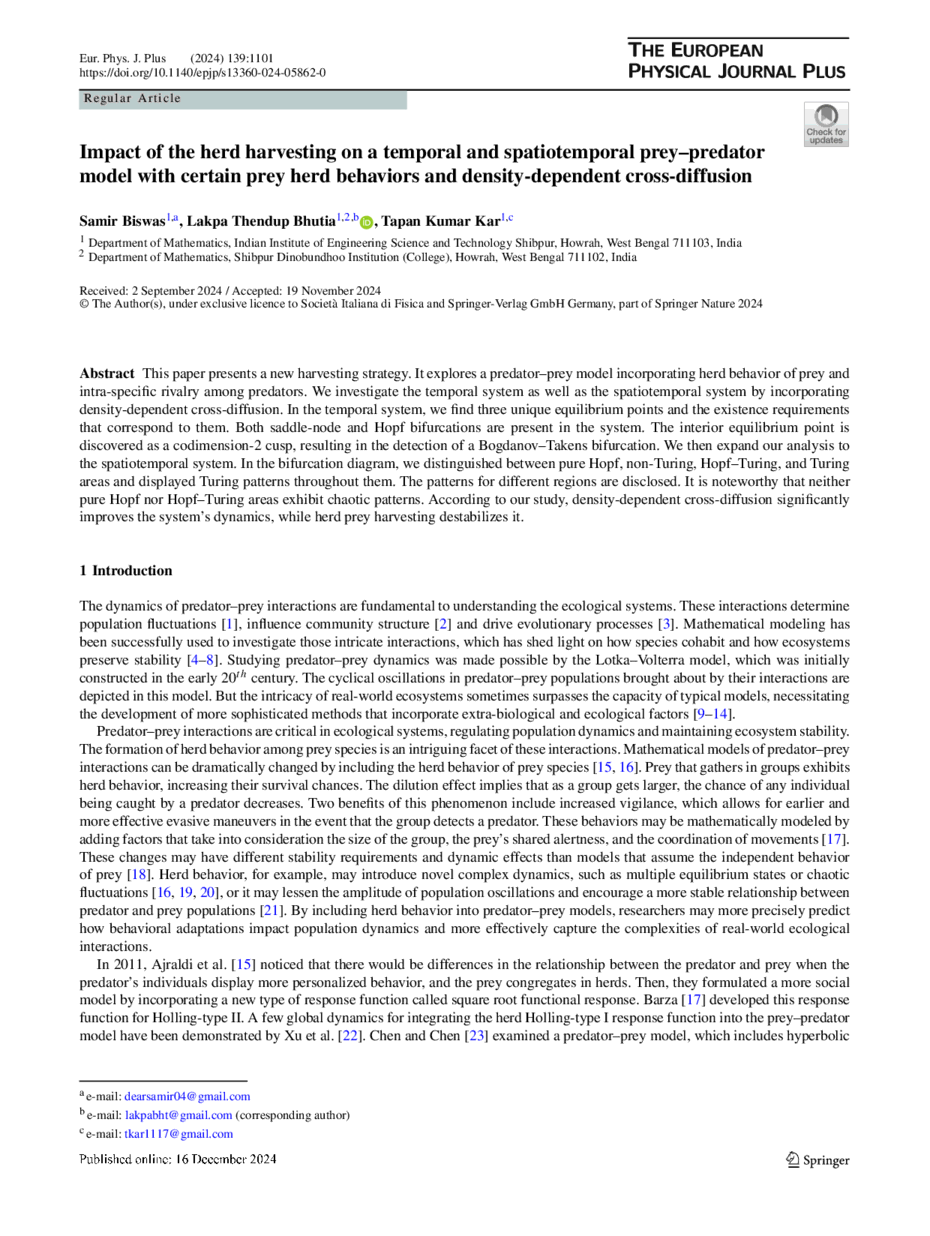https://doi.org/10.1140/epjp/s13360-024-05862-0
Regular Article
Impact of the herd harvesting on a temporal and spatiotemporal prey–predator model with certain prey herd behaviors and density-dependent cross-diffusion
1
Department of Mathematics, Indian Institute of Engineering Science and Technology Shibpur, 711103, Howrah, West Bengal, India
2
Department of Mathematics, Shibpur Dinobundhoo Institution (College), 711102, Howrah, West Bengal, India
Received:
2
September
2024
Accepted:
19
November
2024
Published online:
16
December
2024
This paper presents a new harvesting strategy. It explores a predator–prey model incorporating herd behavior of prey and intra-specific rivalry among predators. We investigate the temporal system as well as the spatiotemporal system by incorporating density-dependent cross-diffusion. In the temporal system, we find three unique equilibrium points and the existence requirements that correspond to them. Both saddle-node and Hopf bifurcations are present in the system. The interior equilibrium point is discovered as a codimension-2 cusp, resulting in the detection of a Bogdanov–Takens bifurcation. We then expand our analysis to the spatiotemporal system. In the bifurcation diagram, we distinguished between pure Hopf, non-Turing, Hopf–Turing, and Turing areas and displayed Turing patterns throughout them. The patterns for different regions are disclosed. It is noteworthy that neither pure Hopf nor Hopf–Turing areas exhibit chaotic patterns. According to our study, density-dependent cross-diffusion significantly improves the system’s dynamics, while herd prey harvesting destabilizes it.
Copyright comment Springer Nature or its licensor (e.g. a society or other partner) holds exclusive rights to this article under a publishing agreement with the author(s) or other rightsholder(s); author self-archiving of the accepted manuscript version of this article is solely governed by the terms of such publishing agreement and applicable law.
© The Author(s), under exclusive licence to Società Italiana di Fisica and Springer-Verlag GmbH Germany, part of Springer Nature 2024
Springer Nature or its licensor (e.g. a society or other partner) holds exclusive rights to this article under a publishing agreement with the author(s) or other rightsholder(s); author self-archiving of the accepted manuscript version of this article is solely governed by the terms of such publishing agreement and applicable law.





